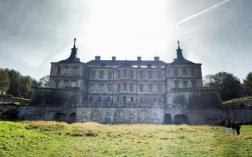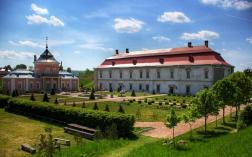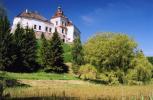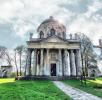The golden Horseshoe

Designation: The golden Horseshoe
Route:
Duration: 1
Price:
Description
Itinerary
Prices and dates
Information
Travel reservation
Places of interest

This mighty Castle witnessed many battles and sieges of the Tartar hordes as well as the revolt of the Ukrainian boyars against the Polish forces of King. The decline and destruction period of the castle was followed by the storage of artworks. Now it houses the branch of the Lviv National Art Gallery Museum. The exhibition presents artworks from the 16th-18th centuries as follows: icons, priceless paintings, unique wooden sculptures (Johann Pinsel, called Ukrainian Michelangelo, was the founder of the sculpture school) and applied arts objects, including furniture and tapestries. The Battle of Vienna, a monumental canvas by Martino Altomonte (7,65 m x 7,3 m), is displayed here as well.
Olesko Castle, a famous architectural monument of the 13th – 18th centuries, is situated on the hill. King John III Sobieski of Poland, who obtained the victory over the Ottomans in Vienna, was born in this castle in 1629.

Pidhirtsi Castle, an architectural monument of the 17th century, is an architectural jewel of European importance. It’s a perfect combination of an imposing palace and fortress (Palazzo in Fortezza). The Palace was commissioned by Stanisław Koniecpolski, the Grand Crown Hetman of the Polish-Lithuanian Commonwealth who was the owner of Pidhirtsi. It was built between 1635 and 1640 to the project of the architect Andrea dell’Aqua. The project of fortifications was designed by Guillaume de Beauplan, an engineer and architect of fortifications.
The stunning opulence and splendor of the palace halls attracted the European monarchs at different times: King Władysław IV of Poland, King John III Sobieski of Poland, Emperor Francis Joseph of Austria, Kaiser Wilhelm of Germany and Emperor Peter the Great of Russia. However such events are left in the past. At present the restoration works are conducted at a very slow pace due to lack of funding.
The architectural ensemble of Pidhirtsi Castle consists of the 18th century Hetman Wayside Inn, Catholic Church of the mid-18th century (architect K.Rymlyanyn) and the Italian style Park established in the 17th century which appeared to be a real masterpiece of park architecture.

Zolochiv Castle was built in the early 17th century as a defensive fortress in accordance with existing requirements of the science of fortifying and according to the Old Dutch system. It was commissioned by Jakub Sobieski, father of John III Sobieski, the future King of the Polish-Lithuanian Commonwealth.
There are two palaces in the castle courtyard: a two-storey Grand Palace in the Renaissance style and the Chinese Palace located in front of the entrance tower.
The Castle witnessed a great love between John Sobieski and his wife Queen Marie Casimire. She often stayed at Zolochiv Castle in 1690s. He fell in love with a beautiful French woman at first sight. Eventually she became Queen of Poland and had a great impact on John III Sobieski. They said that Marie ruled over John and John ruled over Poland. Their love lasted until the death of the King. A large collection of correspondence, including more than 3,000 tender letters from the king to his wife, is the proof of their true love.




